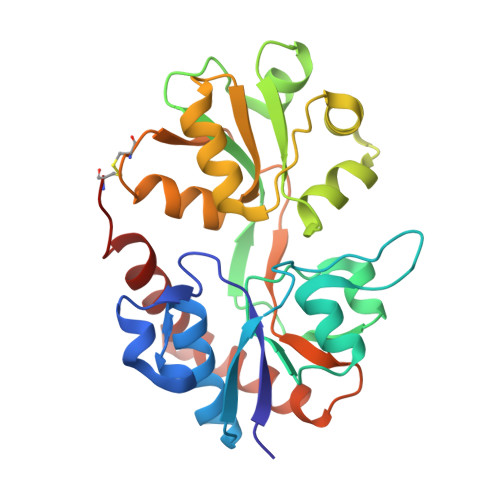Piracetam Defines a New Binding Site for Allosteric Modulators of alpha-Amino-3-hydroxy-5-methyl-4-isoxazole-propionic Acid (AMPA) Receptors.
Ahmed, A.H., Oswald, R.E.(2010) J Med Chem 53: 2197-2203
- PubMed: 20163115
- DOI: https://doi.org/10.1021/jm901905j
- Primary Citation of Related Structures:
3LSF, 3LSL, 3LSW, 3LSX - PubMed Abstract:
Glutamate receptors are the most prevalent excitatory neurotransmitter receptors in the vertebrate central nervous system and are important potential drug targets for cognitive enhancement and the treatment of schizophrenia. Allosteric modulators of AMPA receptors promote dimerization by binding to a dimer interface and reducing desensitization and deactivation. The pyrrolidine allosteric modulators, piracetam and aniracetam, were among the first of this class of drugs to be discovered. We have determined the structure of the ligand binding domain of the AMPA receptor subtypes GluA2 and GluA3 with piracetam and a corresponding structure of GluA3 with aniracetam. Both drugs bind to GluA2 and GluA3 in a very similar manner, suggesting little subunit specificity. However, the binding sites for piracetam and aniracetam differ considerably. Aniracetam binds to a symmetrical site at the center of the dimer interface. Piracetam binds to multiple sites along the dimer interface with low occupation, one of which is a unique binding site for potential allosteric modulators. This new site may be of importance in the design of new allosteric regulators.
Organizational Affiliation:
Department of Molecular Medicine, Cornell University, Ithaca, New York 14853, USA.

















